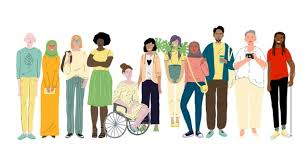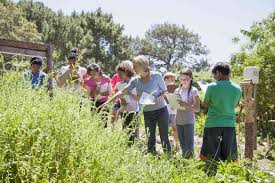Introduction
In today’s increasingly diverse world, teaching history solely through traditional textbooks often fails to capture the complexity and richness of the human experience. Students need more than just a series of dates and events; they need stories that reflect the diverse cultures, perspectives, and contributions that have shaped our world. By embracing hidden histories and new perspectives, educators can create a more inclusive and engaging learning environment that fosters empathy, critical thinking, and a deeper understanding of our collective past. This article explores innovative strategies to teach diversity and inclusion in history education, moving beyond the textbook to bring hidden histories to light.
The Importance of Diverse Histories
Broadening Perspectives
Teaching diverse histories helps broaden students’ perspectives and fosters a more inclusive understanding of the past. By highlighting the contributions and experiences of marginalized groups, educators can challenge stereotypes and promote a more accurate and complete narrative of history.
Building Empathy
Learning about the struggles and triumphs of people from different backgrounds can build empathy and compassion in students. Understanding the experiences of others helps students develop a sense of social justice and a commitment to equity.
Integrating Diverse Voices in the Curriculum
Expanding the Canon
To teach diversity and inclusion effectively, educators need to expand the traditional historical canon to include voices that have been historically marginalized. This includes incorporating the stories of women, people of color, LGBTQ+ individuals, indigenous peoples, and other underrepresented groups.
Using Primary Sources
Primary sources, such as letters, diaries, speeches, and photographs, offer firsthand accounts that bring diverse perspectives to life. Encouraging students to analyze these sources helps them develop critical thinking skills and a deeper understanding of historical context.
Implementing Culturally Responsive Teaching

Understanding Cultural Relevance
Culturally responsive teaching recognizes the importance of students’ cultural backgrounds in the learning process. By connecting historical content to students’ own experiences and identities, educators can create a more engaging and meaningful learning environment.
Strategies for Culturally Responsive Teaching
Educators can implement culturally responsive teaching by incorporating multicultural literature, using diverse examples and case studies, and creating opportunities for students to share their own cultural perspectives. This approach helps students see themselves reflected in the curriculum and fosters a sense of belonging.
Also Read Unlocking Creativity: Exploring Techniques to Spark New Ideas and Approaches
Exploring Intersectionality in History
Defining Intersectionality
Intersectionality is the concept that individuals have multiple, interconnected social identities, such as race, gender, class, and sexuality, that shape their experiences and perspectives. Understanding intersectionality is crucial for teaching a more nuanced and inclusive history.
Applying Intersectionality to Historical Analysis
Encourage students to analyze historical events and figures through an intersectional lens. For example, examining the women’s suffrage movement through the experiences of women of color can reveal the complexities of social movements and the diverse strategies used to achieve change.
Using Technology to Enhance Inclusion
Digital History Projects
Technology offers numerous opportunities to bring diverse histories to life. Digital history projects, such as creating multimedia presentations, interactive timelines, or virtual exhibits, allow students to explore and present historical content in innovative ways.
Accessing Online Archives and Databases
Online archives and databases provide access to a wealth of primary sources and scholarly materials that can enrich history lessons. Resources such as the Digital Public Library of America, the Library of Congress, and the National Archives offer extensive collections that highlight diverse perspectives.
Encouraging Critical Thinking and Discussion
Facilitating Thoughtful Discussions
Creating a classroom environment that encourages open and respectful discussion is essential for exploring diverse histories. Facilitate thoughtful discussions by posing open-ended questions, encouraging multiple viewpoints, and fostering a culture of respect and curiosity.
Analyzing Historical Narratives
Teach students to critically analyze historical narratives by identifying biases, examining the sources of information, and considering alternative perspectives. This approach helps students become more discerning consumers of historical information and promotes a deeper understanding of the complexities of history.
Incorporating the Arts into History Education
Using Visual Art to Explore History
Visual art offers a powerful way to explore historical themes and perspectives. Analyzing paintings, sculptures, photographs, and other visual media can provide insights into the cultural and social contexts of different historical periods.
Integrating Music, Theater, and Literature
Music, theater, and literature are rich sources of historical knowledge and cultural expression. Incorporate songs, plays, and literary works that reflect diverse perspectives into history lessons to provide a more immersive and engaging learning experience.
Field Trips and Community Engagement

Visiting Museums and Cultural Centers
Field trips to museums, cultural centers, and historical sites offer valuable opportunities for students to engage with history in a tangible and meaningful way. Look for institutions that highlight diverse histories and provide interactive and educational experiences.
Partnering with Community Organizations
Partnering with local community organizations can bring diverse voices and perspectives into the classroom. Guest speakers, community events, and collaborative projects can provide students with firsthand insights into different cultures and histories.
Developing Inclusive Curriculum Materials
Creating Diverse Reading Lists
Develop reading lists that include works by authors from diverse backgrounds and perspectives. Look for books that explore different cultural experiences and provide a balanced view of history.
Designing Inclusive Lesson Plans
Design lesson plans that incorporate diverse perspectives and address the contributions of underrepresented groups. Ensure that materials and activities are accessible to all students and reflect a range of cultural experiences.
The Role of Teachers in Promoting Inclusion
Reflecting on Personal Biases
Teachers play a crucial role in promoting inclusion and diversity in the classroom. Reflecting on personal biases and making a conscious effort to address them is essential for creating an inclusive learning environment.
Also Read Gender Inequality Among Young Generations in African Countries: A Growing Concern
Engaging in Professional Development
Continuous professional development can help teachers stay informed about best practices for teaching diversity and inclusion. Look for workshops, conferences, and online courses that focus on culturally responsive teaching and inclusive education.
Assessing Student Understanding and Growth
Using Formative Assessments
Formative assessments, such as quizzes, reflections, and class discussions, can provide valuable insights into students’ understanding of diverse histories. Use these assessments to guide instruction and provide feedback that supports student growth.
Celebrating Diverse Achievements
Celebrate students’ achievements by recognizing their efforts to explore and understand diverse histories. Highlighting student work and providing opportunities for students to share their learning with peers can foster a positive and inclusive classroom culture.
Conclusion
Teaching diversity and inclusion beyond the textbook requires a commitment to exploring hidden histories and new perspectives. By integrating diverse voices, using culturally responsive teaching strategies, and leveraging technology and the arts, educators can create a more engaging and inclusive learning environment. Emphasizing critical thinking, community engagement, and continuous reflection helps students develop a deeper understanding of the complexities of history and fosters a sense of empathy and social justice. As we strive to create a more equitable and inclusive society, teaching history with a focus on diversity and inclusion is not only essential but also transformative.
FAQs
1. Why is it important to teach diverse histories in the classroom?
Teaching diverse histories helps broaden students’ perspectives, challenges stereotypes, and promotes a more accurate and complete narrative of history. It fosters empathy, social justice, and a commitment to equity.
2. How can teachers integrate diverse voices into the curriculum?
Teachers can integrate diverse voices by expanding the traditional historical canon, incorporating primary sources from underrepresented groups, and using culturally responsive teaching strategies that connect historical content to students’ own experiences.
3. What is culturally responsive teaching?
Culturally responsive teaching recognizes the importance of students’ cultural backgrounds in the learning process. It involves using multicultural literature, diverse examples, and creating opportunities for students to share their cultural perspectives.
4. How can technology enhance the teaching of diverse histories?
Technology can enhance the teaching of diverse histories through digital history projects, online archives, and multimedia presentations. These tools allow students to explore and present historical content in innovative and engaging ways.
5. What role do arts and community engagement play in teaching history?
The arts and community engagement offer powerful ways to explore historical themes and perspectives. Visual art, music, theater, and literature provide insights into cultural and social contexts, while field trips and partnerships with community organizations bring diverse voices into the classroom.


